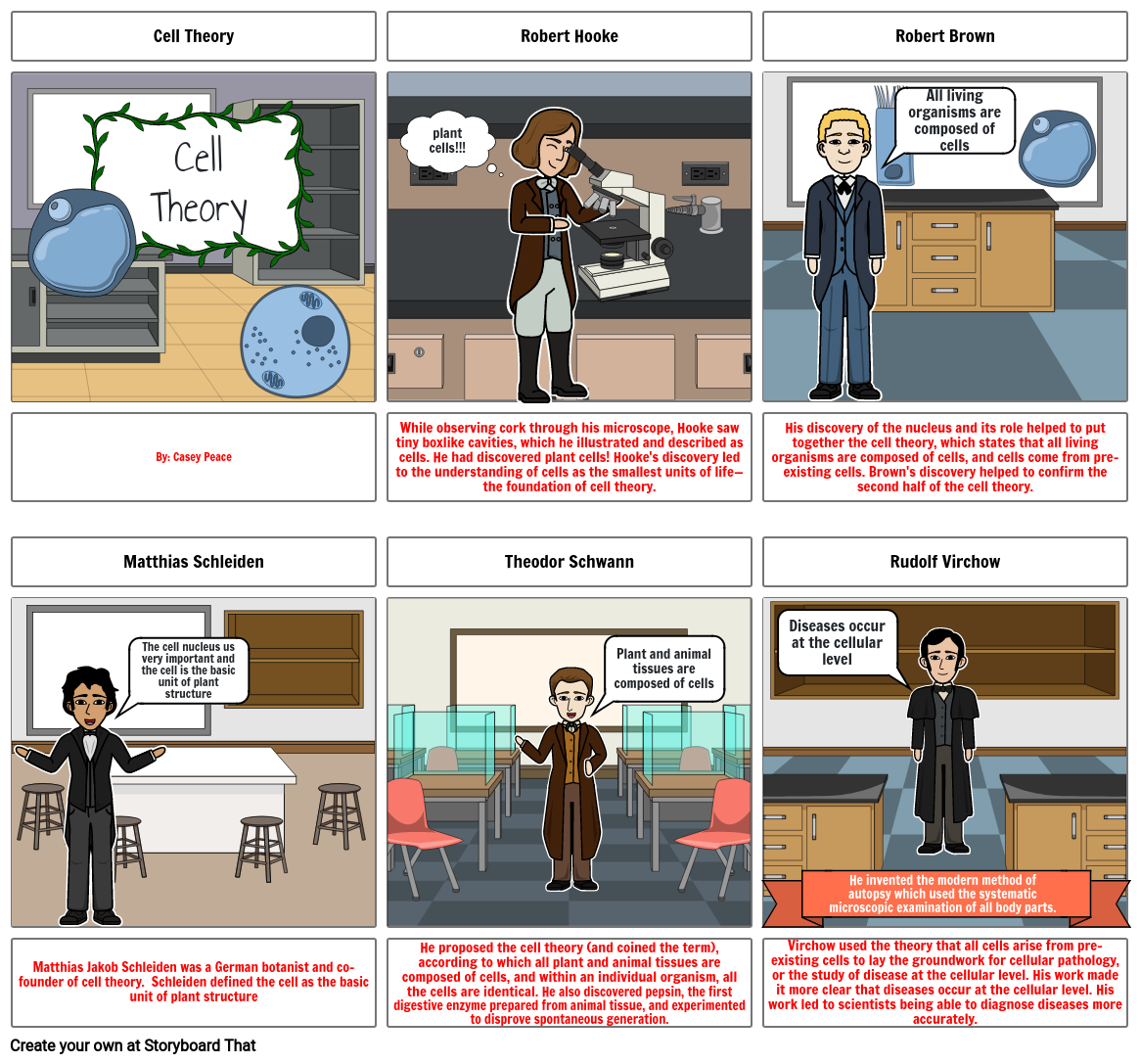Cell Theory Cartoon

Text z Príbehu
- Cell Theory
- CellTheory
- Robert Hooke
- plant cells!!!
- Robert Brown
- All living organisms are composed of cells
- By: Casey Peace
- Matthias Schleiden
- The cell nucleus us very important and the cell is the basic unit of plant structure
- While observing cork through his microscope, Hooke saw tiny boxlike cavities, which he illustrated and described as cells. He had discovered plant cells! Hooke's discovery led to the understanding of cells as the smallest units of life—the foundation of cell theory.
- Theodor Schwann
- Plant and animal tissues are composed of cells
- His discovery of the nucleus and its role helped to put together the cell theory, which states that all living organisms are composed of cells, and cells come from pre-existing cells. Brown's discovery helped to confirm the second half of the cell theory.
- Rudolf Virchow
- Diseases occur at the cellular level
- Matthias Jakob Schleiden was a German botanist and co-founder of cell theory. Schleiden defined the cell as the basic unit of plant structure
- He proposed the cell theory (and coined the term), according to which all plant and animal tissues are composed of cells, and within an individual organism, all the cells are identical. He also discovered pepsin, the first digestive enzyme prepared from animal tissue, and experimented to disprove spontaneous generation.
- He invented the modern method of autopsy which used the systematic microscopic examination of all body parts.
- Virchow used the theory that all cells arise from pre-existing cells to lay the groundwork for cellular pathology, or the study of disease at the cellular level. His work made it more clear that diseases occur at the cellular level. His work led to scientists being able to diagnose diseases more accurately.
Bolo vytvorených viac ako 30 miliónov storyboardov

